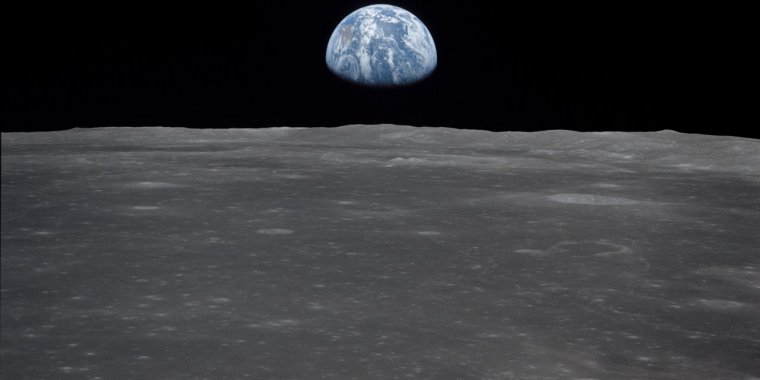| News / Space News |
Asteroid May Actually Be An Old Chunk of Earth’s Moon
Could there be a mini-Moon floating through our solar system? Researchers from the University of Arizona say a near-Earth asteroid, named Kamo`oalewa, may actually be a large piece of the Moon that somehow broke away from our lone satellite.

The Earth seen from the Moon. Photo: NASA
Scientists call Kamo`oalewa a quasi-satellite, which is a category of asteroids that orbit the Sun, but still pass relatively close to the Earth.
Astronomers know very little about quasi-satellites because they are typically very faint in the night’s sky, making it hard for telescopes to spot them. Researchers discovered Kamo`oalewa using the PanSTARRS telescope in Hawaii back in 2016.
The asteroid’s name comes from a Hawaiian creation chant, which describes an offspring who travels on its own. It is roughly the size of a Ferris wheel, coming in at around 150 to 190 feet in diameter.
At its closest, Kamo`oalewa gets within nine million miles of the Earth. However, because of its unique orbit, humans can only see it for a couple of weeks every April and only Earth’s largest telescopes can spot it.
So why do scientists think this mysterious mass is actually a chunk of the Moon? UArizona planetary sciences graduate student Ben Sharkey discovered that Kamo`oalewa shares the same pattern of reflected light (its spectrum) as moon rocks collected by the Apollo space missions.
Study authors explain that this suggests Kamo`oalewa originated from the same place as those rocks — Earth’s moon.
Although the team isn’t sure how such a large piece of the Moon broke off, they have never discovered another quasi-satellite that had the same light spectrum as the Moon.
“I looked through every near-Earth asteroid spectrum we had access to, and nothing matched,” Sharkey, the paper’s lead author, says in a university release.
Sharkey and his UArizona adviser, associate professor of lunar and planetary sciences Vishnu Reddy, hunted for another possible explanation for this coincidence for three years.
Study authors found that Kamo`oalewa’s orbit is very similar to the Earth’s, but with a slight tilt in it. That orbital path is very different from the typical near-Earth asteroids, according to study co-author Renu Malhotra.
“It is very unlikely that a garden-variety near-Earth asteroid would spontaneously move into a quasi-satellite orbit like Kamo`oalewa’s,” Malhotra explains. “It will not remain in this particular orbit for very long, only about 300 years in the future, and we estimate that it arrived in this orbit about 500 years ago.”
As for how the Moon’s “offspring” started traveling on its own, Malhotra’s lab team is now investigating the possible origins of Kamo`oalewa. (Tasnim News Agency)
YOU MAY ALSO LIKE





